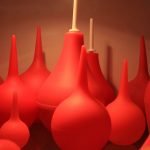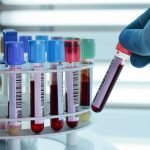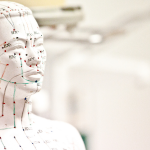Homeopathic Injections
Unique Treatment for Musculoskeletal & Smooth Muscle Pain
BILL CARADONNA, RPH, ND
Like many other doctors, I have had patients with musculoskeletal pain come to my office after having tried all manner of allopathic and other natural medicine treatment modalities with only limited or no success. And unfortunately, I too didn’t have success in treating them – at first. I had heard in passing of homeopathic injections but had no exposure to this practice. I was not interested or focused on medical procedures in my practice and had no special physical medicine equipment. What I did have was a strong desire to help patients in pain, and that led me down this path. Now, I look forward to helping almost any patient who presents in my office with challenging musculoskeletal pain conditions.
My introduction to homeopathic injections came from a weekend injection seminar in Portland, OR in 2002 with Rick Marinelli, ND, a pioneer in the naturopathic community for pain management. The focus was on trigger point (TP) and subcutaneous (SC) injections using anesthetics and homeopathic formulas. The ability of homeopathy to stimulate the body to heal is a game changer. Twenty years later, I have a syringe in my hand almost all day and enjoy an estimated 90% success in resolving challenging musculoskeletal pain conditions (absent a few occasional obstacles to cure). I have modified these injection methods to be low risk, easy to perform, and simple to apply if using straightforward guidelines. These are “stand alone” treatments; no other specialized injection ingredients or supplement supports are needed most of the time. Once evaluation and management have been assessed, patients do not require any office treatment time outside of performing the injections. While standard familiarity with muscle and nerve anatomy and function is important, memorizing specific nerve pathways is not necessary. If dealing with a referred pain syndrome, there are many TP references. Even some smart phone apps that detail common sites for TPs are available to practitioners.1 I have wanted to share my experiences, and so have trained approximately 100 doctors on a small class tutorial basis over the last decade using the modified methods I developed in this time.
Nowadays, patients come to my office specifically for TP and SC injections for pain management. For a general practitioner, while patients may have other presenting complaints, an intake review will often reveal additional musculoskeletal issues. Also, once a primary pain complaint has been treated and resolved, I will often be asked “Can you fix this too?” The satisfaction of successfully treating these conditions is enormous. Especially rewarding to me is the ability for the patient to discontinue the chronic use of analgesics such as ibuprofen or acetaminophen. Referrals not only come from word-of-mouth and website information, but also from other practitioners. When a practitioner is facing a lack of success or plateau of improvement and refers a patient to me, this reflects positively on them, since the patient is happy to have found a solution due to their recommendation. Once improved, I can then refer the patient back to them for long-term support. Also, I have treated many practitioners for symptoms they have acquired due to their practice or other injuries, allowing them to continue to practice unimpeded.
What are Trigger Points?
Muscle locations that trigger pain, whether directly or referred, have been well defined.2-4 Researchers have also elucidated the underlying mechanisms by which TPs form. The anatomical design of the body seems responsible for many painful locations in a nearly predictable manner. An understanding of these concepts coupled with excellent palpation skills is all that is really needed to identify the treatment areas, yet I never find these treatments routine. Often, successful injection treatments involve a deep understanding of the relationships between the muscles and joints. Except in a few conditions, this goes beyond “follow the recipe” treatments into treating the individual. TPs responsible for referred pain are important to identify, especially when the specific pain location is treated without success.
Finding exact TPs requires eliciting a twitch response in the muscle, either by inserting a needle in the muscle until the muscle fires or twitches, or manually through cross fiber manipulation of the muscle fibers. Traditional TP treatment requires an injection deep into the muscle belly; often, an injection of fluid surrounding the point is also necessary.
Injection Methods & Ingredients
Traditional injection ingredients include an anesthetic (usually lidocaine or procaine) and/or bulking agents such as sterile water or normal saline (0.9% saline). These can be used successfully, but in my experience, not as effectively as homeopathic products. Dry needling has also been used as a mechanical method to break up the TP but has not been shown to be superior to injections. It also results in a significant amount of post-treatment pain.5 Aggressive acupuncture needle stimulation into meridian points and ah-shi (“yes! that’s it!”) pain points are also designed to trigger fasciculations and relax the muscle. When using homeopathic injection ingredients, the injection techniques required become much more simplified since the homeopathics seem to work from the general site of administration. The need to identify the exact TP becomes less relevant, as do deep injections.
Homeopathic low-dose complex remedies have a long history of use in Europe and have a high safety profile.6 Effects of stimulating the body to heal is proven in my office daily using these products. In some of these combinations, mechanisms of action have been elucidated, and successful studies have been performed in comparison to placebo or to other drug products, including topical formulations.7 A well-designed injection study has involved intra-articular applications.8-9
Recently, the FDA has prohibited the commercial sale of ampules as the first salvo on declared intentions of limiting homeopathic products in the US.9 However, at least 2 foreign producers of homeopathic ampule formulations still have products available by import to individual practitioners. A particularly well-known formulation available by import for skeletal muscle treatment has been studied extensively.9-13 Clinically, it relaxes muscles and decreases pain. It is uniquely useful in part because it is an inflammation modulator, not an anti-inflammatory agent.10 Since some inflammation is required for healing, it has none of the catabolic negatives of nonsteroidal anti-inflammatory drugs or cortisones. Lymph formulas are often used in combination with immunomodulatory formulas, as they help detoxify the extracellular matrix, which further facilitates healing. I have used lidocaine and procaine in TP injections primarily because it is the medically accepted standard. While these products seem to be a good idea, I have almost no difference in results when not including either in the injections. When injecting major muscle groups around an arthritic joint, I will include other products that are specifically helpful in arthritic conditions.
Whether pain issues are acute or have been present for decades makes little difference in treatment success. Progressive improvement occurs with repeated injections in primary complaint locations, followed by further treatments to collateral and compensatory muscles. The modification of the TP injections includes treating all parts of the muscle where neuromuscular tension is present, rather than just specific TPs. This results in a true holistic approach to correcting the painful condition. Because injected homeopathic formulas can perfuse tissues thoroughly, deep injections are not required. This significantly reduces any risk of injection injury. Once significant progress has been made, patients can be referred to massage therapists, chiropractors, acupuncturists, or physical therapists for more global support and correction of long-term issues. After the homeopathic injection procedures, such issues are then able to be more successfully addressed.
Intramuscular TP Injections
Musculoskeletal injections of homeopathic formulas can successfully relieve acute and chronic neuromuscular tension and inflammation in most major problem areas.11-13 These include the lower back, sacroiliac (SI) area, and hip. Sciatica/pseudosciatica particularly responds well when treating regions around the lumbar/SI/gluteus nerve pathways. Leg regions, including iliotibial bands, hamstrings, and calf muscles, relax with the injection therapy; leg cramping will often resolve. Upper back pain involving trapezius and rhomboid muscles will most likely be lessened and relieved. Shoulders are particularly interesting; due to the glenohumeral joint’s 360-degree range of motion, most of its surrounding muscles will need to be addressed. Frozen shoulder, though a more difficult condition, often will be resolved. Upper arm pain is mostly successfully addressed by treating trigger points in the infraspinatus muscles. Torso/rib strains with shallow intercostal injections relax and heal quickly.
Therapeutic SC Injections
Therapeutic SC injections are an equally impactful approach, particularly useful over joints or tissues insufficient to inject into. Cervical complaints are common and addressed appropriately by these SC injections. I have treated multiple bone-on-bone joint issues with great success using arthritic and cartilage support products and without the need for intra-articular injections. Also, injecting SC tissue over vertebrae that have arthropathies or disc issues with arthritis and disc formulas are effective ways to correct all manner of these conditions. The muscle relaxation alone around a vertebral segment with disc degeneration or displacement often is helpful, as the reduced tension likely alleviates nerve pressure. I have often treated peripheral neuropathies successfully by treating around the nerve root. Acute joint strains/sprains (including knees, elbows, and ankles) can quickly and effectively be improved and resolved. The lymph formula is also effective in reducing edema. Plantar fasciitis also responds dramatically to SC injections around the lateral and medial edges of the foot. Acute gout episodes can be controlled. Carpal tunnel syndrome can be improved or resolved, with patients often avoiding surgery. Other wrist, hand, and finger issues respond well to SC treatment.
Another stunningly effective SC treatment is for smooth muscle cramping. Providing small needle subdermal injections for abdominal or menstrual cramps rapidly improves and resolves the episode. Retreatment may be needed the next day, but any return of symptoms is much milder. Along with a liver formula, biliary colic responds well to the smooth muscle spasm formula. A congested liver condition can be supported by subcutaneous injections of a liver formula over the organ region. Headaches and migraines can be relieved quickly and significantly with use of the smooth muscle and headache formulas by providing SC injections along the involved head areas. Acute sinus pressure can be relieved by SC injections with a sinus formula over the symptomatic areas. One of the most significant treatments involves lymphatic congestion. SC injections over a lymph chain with a lymph formula will decrease nodal swelling significantly by the next day. I find this particularly helpful when head congestion accompanies submandibular lymph swelling. Relieving this blockade allows the congestion to drain and allow for faster resolution of cold symptoms. I recently successfully treated a case of significant axillary lymph swelling still present 2 weeks after an upper arm COVID vaccination.
Training
My dream has been to have any ND who is interested to be well educated and trained in providing TP and SC homeopathic injection therapy. Over a decade ago, I started providing single-day tutorials in TP and SC homeopathic injection therapy to 4 doctors each. These tutorials included notes and discussions in the morning and an individually supervised practicum in the afternoon. I would bring in my patients so doctors could palpate real conditions, observe my demonstration of appropriate injection procedures, and then perform the injections themselves. I found this to be an effective method, ensuring patient safety and successful treatment for the doctors. The limitation to this was, of course, the need to be physically present.
Since embarking on this venture, injection training has become more available beyond what was a few vitamin B12 shots in school. Now, many doctors have training in intra-articular injections, prolotherapy, platelet-rich plasma, ozone, and intravenous treatments. With this training, I have felt that doctors with such prior training can rely on video observation to ensure proper hand placement and appropriate injection methods. Recently, I had a class videotaped for this purpose. When the editing and production is complete, it will be available for distance learning to those doctors who have documented additional injection training, and I encourage any doctor interested learning about this therapy to contact me.
[REFS]- Simons DG, Travell JG, Simons LS. Travell & Simons’ Myofascial Pain and Dysfunction: The Trigger Point Manual. Baltimore, MD: Lippincott Williams & Wilkins; 1999:5, 11-93.
- Alvarez DJ, Rockwell PG. Trigger points: diagnosis and management. Am Fam Physician. 2002;65(4):653-660.
- Han SC, Harrison P. Myofascial pain syndrome and trigger-point management. Reg Anesth. 1997;22(1):89-101.
- Barker J, Pavone S. Trigger point therapy. Trigger Point Therapy – Naturopathic Doctor News and Review. https://ndnr.com/pain-medicine/trigger-point-therapy/. Published July 15, 2008. Accessed July 17, 2022.
- Hong CZ. Lidocaine injection versus dry needling to myofascial trigger point. The importance of the local twitch response. Am J Phys Med Rehabil. 1994;73(4):256-263.
- Jong MC, Jong MU, Baars EW. Adverse drug reactions to anthroposophic and homeopathic solutions for injection: a systematic evaluation of German pharmacovigilance databases. Pharmacoepidemiol Drug Saf. 2012;21(12):1295-1301.
- Widrig R, Suter A, Saller R, et al. Choosing between NSAID and arnica for topical treatment of hand osteoarthritis in a randomised, double-blind study. Rheumatol Int. 2007;27(6):585-591.
- Lozada CJ, Rio E, Reitberg DP, et al. A double-blind, randomized, saline-controlled study of the efficacy and safety of co-administered intra-articular injections of TR14 and ZE14 for treatment of painful osteoarthritis of the knee: The mozart trial. European Journal of Integrative Medicine. https://www.sciencedirect.com/science/article/pii/S187638201730135X?via%3Dihub. Published July 29, 2017. Accessed July 17, 2022.
- Office of the Commissioner. FDA warns four manufacturers of unapproved injectable drugs labeled as homeopathic. U.S. Food and Drug Administration. https://www.fda.gov/news-events/press-announcements/fda-warns-four-manufacturers-unapproved-injectable-drugs-labeled-homeopathic. Published June 18, 2020. Accessed July 17, 2022.
- Porozov S, Cahalon L, Weiser M, et al. Inhibition of IL-1beta and TNF-alpha secretion from resting and activated human immunocytes by the homeopathic medication Traumeel S. Clin Dev Immunol. 2004;11(2):143-149.
- Mueller-Loebnitz C, Goethel D. Review of the clinical efficacy of the multicomponent combination medication Traumeel and its components. Alternative Therapies. 2011;17(2):18-31.
- Muders K, Pilat C, Deuster V, et al. Effects of Traumeel (Tr14) on Exercise-Induced Muscle Damage Response in Healthy Subjects: A Double-Blind RCT. Mediators Inflamm. 2016;2016:1693918.
- Schneider C. Traumeel – an emerging option to nonsteroidal anti-inflammatory drugs in the management of acute musculoskeletal injuries. Int J Gen Med. 2011;4:225-234.

Bill Caradonna RPh, ND, received a BS in pharmacy from Northeastern University in Boston, MA in 1976. He also pursued massage therapy training, a BA in natural health sciences, and a nutrition degree from the Santa Fe College of Natural Medicine/Institute of Traditional Medicine, Santa Fe, NM from 1981 to 1984. He graduated from Bastyr University in 1997 where he also was adjunct faculty from 1989 to 1997. Dr Caradonna has been in private practice since 1997 at the Queen Anne Naturopathic Center in Seattle. He can be reached via email at [email protected] and on his practice website at www.QANC.com.










